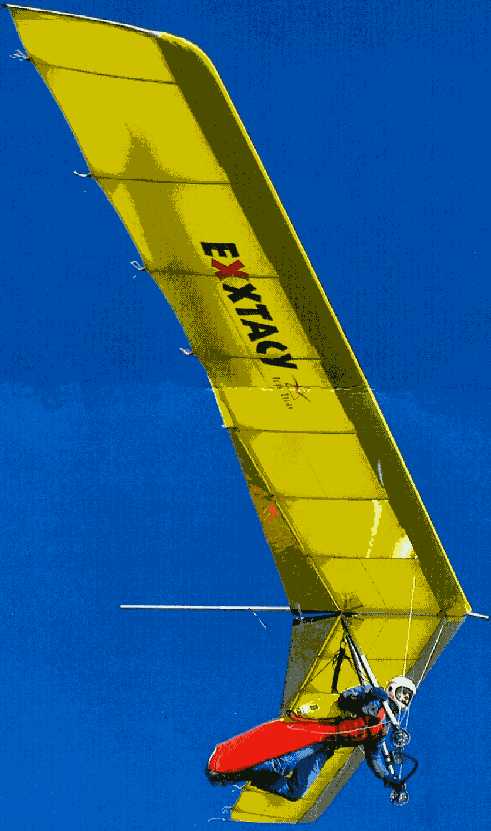

The hang glider’s limited ability to maneuver and handle wind change, as well as the fact that pilots fly without protective body coverings, make the sport somewhat dangerous. Annual world championships are governed by the International Aeronautical Federation. Many design variations followed, and hang gliding, first merely a recreational activity, has become a competition sport, with flight-duration, distance, and altitude-gain events. The hang glider was born in the 1960′s, based on designs by Francis Rogallo of the National Aeronautics and Space Administration (NASA) for flex-wing parachutes for space vehicle reentry. In order to take off, the pilot dives from a hill, cliff, or mountain.

The designed evolved so that hang gliders have an aluminum frame, a fabric sail, and a comfortable harness for the pilot. The name derives from the fact that early pilots hung onto the gliders. Good gliders move 20 miles horizontally for each mile of altitude attained and can stay aloft for many hours.Īlthough some hang gliders have small engines, most hang gliding is unpowered flight in a kite like craft based on the structure of the sailplane. The pilot turns into a thermal, and after reaching the maximum altitude possible seeks the next useful thermal. After launch, the craft disengages from the towline at a desired height and the pilot seeks thermals. Thermal currents (thermals) form by heat rising from the ground and are always present under cumulus clouds.įor traditional flight, a glider is accelerated to the speed needed to overcome gravity by means of a catapult or by being towed by a winch, automobile, or powered airplane. Ridge currents form when steady winds blow against ridges or hills, but are limited to areas near their windward edges. They found that strong ridge or thermal up currents provided the motive power gliders needed. Its aircraft engineers, forbidden by treaty to build powered aircraft for military use, explored the great efficiency of light gliders with single, long wings and the weather conditions that optimized soaring flight. Most modern glider design arose in post-World War I Germany. American glider pioneers Octave Chanute, the Wright brothers, and John Montgomery made many glider innovations. In 1891, his crewed craft, capable of flying after a downhill run into the wind, made the first of thousands of flights. The best known is the German Otto Lilienthal, who studied air buoyancy and resistance, wing shape, and tail stabilization. Beginning in the 1870′s, pioneer aeronauts built successful gliders to define efficient wing and control system design. Modern sailplanes lose only a few feet of altitude per second and ascend air currents, rising just 2 to 3 miles per hour. Cargo gliders (CGs) are towed by powered planes and carry heavy commercial loads in tow, which they can land where powered craft cannot. Popular secondary gliders (sailplanes) have fuselages and cockpits, and look like airplanes with very long, narrow wings. Primary gliders have girder frameworks with attached wings, controls, stabilizers, and open seats at the framework’s front. Gliders include primary, secondary, and cargo types. Gliders look like airplanes but are much lighter they have low ratios of weight to wing area and their wings are much longer and narrower than those of powered aircraft. Traditional gliders, progenitors of hang glider and paraglider flight, are unpowered, heavier-than-air craft that attain sustained flight via the aerodynamic forces acting on them. The same basics of gliding underlay the early development of heavier-than-air flight. Significance: Hang gliders and paragliders utilize basic principles of aerodynamics to fly without an external power source. Hang gliders are kitelike paragliders are made of airfoil cells inflated by passing through the air. Definition: Unpowered aircraft derived from sailplane gliders and double-surfaced sport parachutes.


 0 kommentar(er)
0 kommentar(er)
